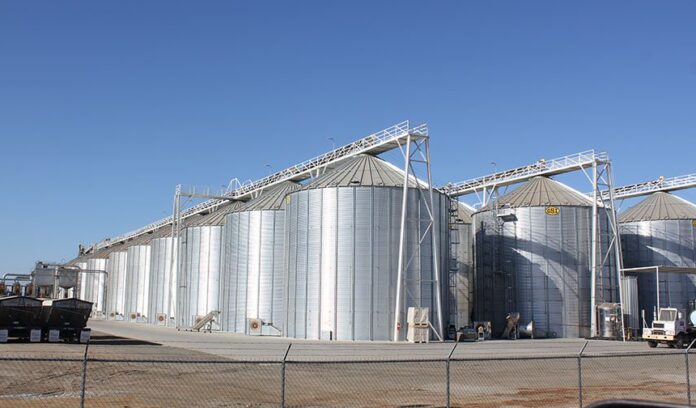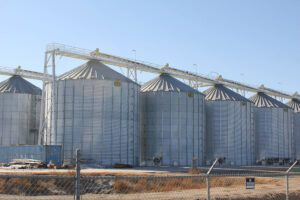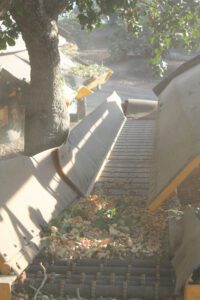
As California pistachio crops continue to increase in size, processors are expanding hulling, drying and processing capacity to meet demand. Several processors are planning expansions or have recently expanded, and one new large capacity plant is in the works.
Spiro Stefanopoulos recently received approval from Fresno County Planning Commission for a 98-acre pistachio processing plant in the Mendota area, where his family’s pistachios are grown. The plant will be built in four phases and consist of two hullers, 40 29-foot dryers and 48 50-foot silos for storage when complete.
When construction is complete, Stefanopoulos said the plant will have a 45-million-pound storage capacity.
In the first two years of plant operation, he said only pistachios from the family orchards will be processed. By 2028-29, he said, they will begin processing pistachio crops from other growers.
“The goal, depending on yields, will be processing capacity of 50 million pounds in 2025,” Stefanopoulos said.
The plant will be adjacent to the family’s 13,000 acres of pistachio orchards and will eliminate trucking costs they now incur by taking their crop to another processing plant 25 miles away.
Richard Matoian, grower and former president of American Pistachio Growers said plant capacity has been a topic in the industry for the last 10 years as pistachio acreage expanded in the Central Valley. Plants need capacity to hull and dry incoming pistachio nuts within 24 hours of harvest for quality reasons, they need storage capacity and, if further processing is done, they need capacity to achieve that step.
Pistachio trees were first commercially planted in California less than 50 years ago. By 2020, production acres pushed crop size to 1 billion pounds for the first time.
Matoian advocated for the proposed Firebaugh plant earlier this summer and told the Fresno County Planning Commission the California pistachio crop size could double by 2031 due to new acreage being planted. There are currently seven pistachio processors in California representing 95% of capacity, Matoian noted.
“Processors recognize the growth trend and have the unique challenge with this crop, the nuts must be hulled and dried within 24 hours of harvest to maintain quality,” he said. “That creates a bottleneck at the processor.”

Processors Anticipate Tonnage
Matoian said each processor knows the tonnage that will be coming in each year and plans expansion to meet that demand. Some processors are also offering bonuses for nighttime harvest deliveries or early harvest to alleviate congestion with incoming loads which can be difficult at the height of harvest. There may be temporary glitches with machinery breakdowns, or power outages at processors, but overall, Matoian said he has seen the necessary infrastructure planned or put in place to handle the larger pistachio crops.
Referencing the Stefanopoulos plant project, he said when pistachio growers reach a certain production level they begin to look at hulling and drying their own product. Some may move beyond that, going into size grading, color grading and/or increasing their capacity to handle neighbor’s pistachio crops.
Matoian said the industry will continue to plan for handling larger crops in the future and add necessary infrastructure to move the crop.
Mitch Keenan at Keenan Farms said their capacity was expanded by 50% two years ago in anticipation of larger pistachio crops. The family has been farming pistachios in the Avenal area since 1972. Their processing plant was built for their own use but now takes in nuts from growers down to the Buttonwillow area.
Jeff Gibbons, manager at Setton Pistachio in Terra Bella said at Setton they are always analyzing capacity to keep up with the expected increase in pistachio production. New orchard plantings will continue to boost production for some time as trees reach production age, and processors recognize the need to add room, Gibbons said.
One of the state’s largest pistachio processors, Wonderful, has been aggressive in building capacity as has Setton, Gibbons said .
Setton’s main processing and production facility is in Terra Bella, Calif. on their primary 80-acre site, and they have another newer facility seven miles to the west. The two plants can process more than 125 million pounds of pistachios annually.

Limiting Factors
While pistachio trees have drought and salinity resistance in their favor, the limiting factor to increased crop growth could be water availability and cost. Gibbons said other pistachio processors are adding capacity in anticipation of larger crops, but concerns with long term water availability may insert some caution into expansion plans.
“In the past, there were always plans for expansion, but with SGMA, there may be some limitations and hesitation to expand,” Gibbons said. Processing plants could be built and then lack sufficient tonnage.
A 2022 study by American Pistachio Growers showed 25% of California pistachio acreage had only a single source of water. Restrictions on groundwater pumping or higher costs for surface water delivery (if water is even available) can make pistachio production uneconomical for some growers.
That scenario may cause some hesitation in plant capacity expansion, Gibbons said. The capacity might be built and not needed if acreage is taken out of production.
Extending the harvest period could also take some pressure off plant capacity. New pistachio varieties that mature earlier can initiate an earlier start in the processing season, perhaps extending it from 25 days to 45 days. That scenario has extra benefits, Gibbons said. The earlier harvest helps with crop quality, lowering the insect damage percentage. Quality can be high with a first shake even though about 10% of nuts are still left on the tree. Coming back for a second shake 10 to 14 days later to get the remaining nuts can pay for itself with higher quality overall, Gibbons said. That last 10% also will come off the tree easier than a harder first shake that attempts to get all the nuts off. That later release also means fewer mummy nuts left in the orchard.

Cecilia Parsons | Associate Editor
Cecilia Parsons has lived in the Central Valley community of Ducor since 1976, covering agriculture for numerous agricultural publications over the years. She has found and nurtured many wonderful and helpful contacts in the ag community, including the UCCE advisors, allowing for news coverage that focuses on the basics of food production.
She is always on the search for new ag topics that can help growers and processors in the San Joaquin Valley improve their bottom line.
In her free time, Cecilia rides her horse, Holly in ranch versatility shows and raises registered Shetland sheep which she exhibits at county and state fairs during the summer.















